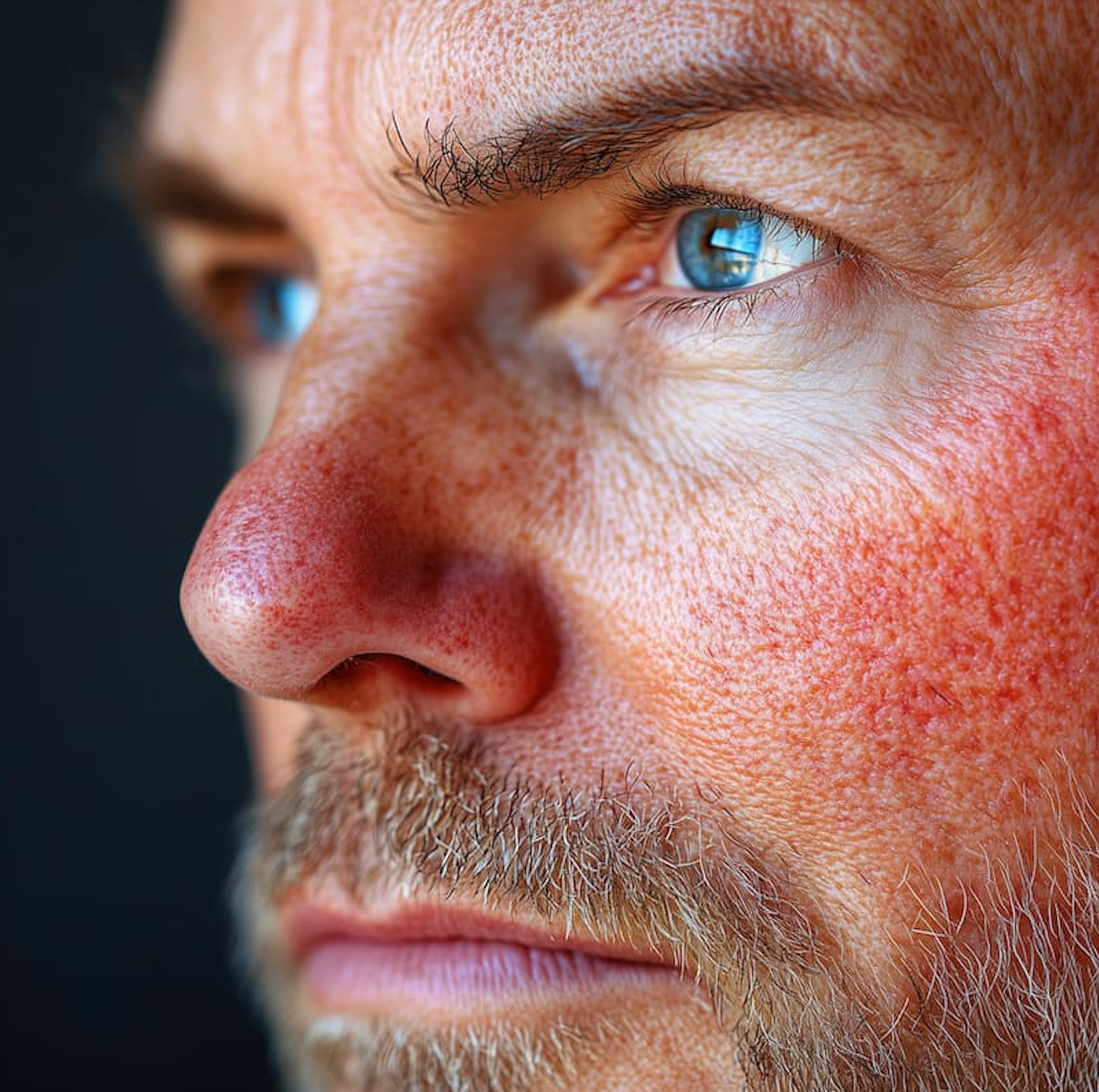Carbon Dioxide Laser Therapy Offers Sustained Results for Rhinophyma
Most participants undergoing the laser treatment reported long-lasting positive effects with minimal adverse events.
By
Lana Pine
| Published on January 9, 2025
4 min read
Credit: Adobe Stock/AnastasiiaAkh

A study of 11 patients with rhinophyma showed that carbon dioxide (CO2) laser treatment provided long-term satisfaction and improved nasal airflow for the majority.
“This study is important because it sheds light on how CO2 laser treatment can effectively and safely improve rhinophyma,” wrote a group of investigators from the Karolinska Institutet in Stockholm, Sweden.
Rhinophyma, a severe form of rosacea, is characterized by the enlargement and thickening of nasal skin. It’s caused by the growth of sebaceous glands and the thickening of the skin, which leads to irregular nodular growth.
Although rosacea, a condition that affects approximately 5.5% of the population, is more common among women, rhinophyma is predominantly diagnosed in White men between 50 and 70 years old. Not only does it change the cosmetic appearance, but it can also seriously obstruct nasal breathing.
Diagnosing the condition can be difficult as certain conditions, including basal cell carcinoma, can present similarly. Treating rhinophyma generally involves medical therapies, such as retinoids and tetracyclines, and surgery, including dermaplaning and dermabrasion, cryosurgery and electrosurgery. However, CO2 laser resurfacing is quickly becoming the gold standard based on the precision of the intervention coupled with minimal blood loss. While the short-term outcomes have been studied, the long-term effects were relatively unknown.
A retrospective case series assessed the long-term efficacy as well as patient satisfaction of CO2 laser treatment. The cases included 11 male patients aged 54 to 79 years who were treated with the laser between 2015 and 2023 at the Karolinska University Hospital.
Patients were given a questionnaire to determine their long-term response to and satisfaction with the treatment. Investigators asked participants how satisfied they were with their treatment on a scale of 0 (very dissatisfied) to 10 (very satisfied), whether the beneficial effects were maintained, whether the treatment improved nasal breathing, whether they experienced any side effects and whether they would recommend this treatment to other patients.
Patients demonstrated sustained positive outcomes, with 55% reporting improved nasal airflow and 92% experiencing continued high satisfaction. Historically, the more severe the rhinophyma, the more likely patients will experience airflow obstruction. Investigators believe this is due to excessive growth, which can lead the nostril to collapse from the weight.
“Knowing that severe thickening in the nasal area can obstruct breathing, it is unsurprising that reducing that thickness with a CO2 laser can improve nose breathing,” investigators wrote.
Ten out of 11 patients would recommend the treatment to other patients, although every participant believed the positive effects were maintained long term.
Only one adverse event involving postoperative bleeding was reported. No serious adverse events were noted, although some individuals noted scarring and hypopigmentation, which often develops six months post-procedure.
Investigators emphasized these results indicate the treatment is a safe and effective option for Caucasian males with moderate to major rhinophyma. However, due to the risk of hypopigmentation, it is important to consider skin types when choosing CO2 laser therapy; while it is ideal for Fitzpatrick skin types I to III, caution should be taken when treating skin types IV to VI. Additionally, the laser may not be best for patients with obstructed nose breathing.
“Patients with difficulty breathing or major rhinophyma should be offered laser treatment early, instead of medical options like isotretinoin, which is less likely to improve breathing,” investigators wrote. “Conversely, patients with darker skin may prefer alternative treatments due to the increased risk of hypopigmentation.”

